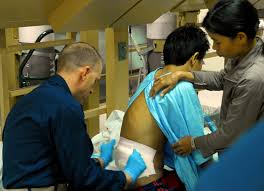Is it medical malpractice to discharge patients from hospitals with unstable vital signs?
 Discharging a patient too early can be hospital negligence that puts a patient at higher risk of readmission or death. An alarming new study shows that 1 out of 5 patients is released from the hospital before his vital signs are stable. The study released in the Journal of General Internal Medicine, was conducted by Dr. Oanh Nguyen (Assistant Professor Internal Medicine Department of Clinical Science), Dr. Anil Makam (Assistant Professor Internal Medicine Department of Clinical Science) and Dr. Ethan A. Halm (Professor Internal Medicine Department of Clinical Sciences and Chief of the Division of General Internal Medicine), all from the University of Texas (UT) Southwestern Medical Center.
Discharging a patient too early can be hospital negligence that puts a patient at higher risk of readmission or death. An alarming new study shows that 1 out of 5 patients is released from the hospital before his vital signs are stable. The study released in the Journal of General Internal Medicine, was conducted by Dr. Oanh Nguyen (Assistant Professor Internal Medicine Department of Clinical Science), Dr. Anil Makam (Assistant Professor Internal Medicine Department of Clinical Science) and Dr. Ethan A. Halm (Professor Internal Medicine Department of Clinical Sciences and Chief of the Division of General Internal Medicine), all from the University of Texas (UT) Southwestern Medical Center.
Vital signs include:
- temperature
- heart rate
- blood pressure
- respiratory rate
- oxygen saturation
The researchers analyzed 32,835 electronic medical records from 6 different hospitals in Dallas-Forth Worth area. 18.7% of the patients were released with one or more abnormal vital signs. Researchers found that
- 12.8% of the patients who were released with all their vital signs stable were readmitted or died
- 16.9% of the patients who were released with one vital sign unstable were readmitted or died
- 21.2% of the patients who were released with two vital signs unstable were readmitted or died
- 26.0% of the patients who were released with three or more vital signs unstable were readmitted or died
“At a time when people are developing complicated, black box computerized algorithms to identify patients at high risk of readmission, our study highlights that the stability of vital signs, something doctors review with their own eyes every day, is a simple, clinically objective means of assessing readiness and safety for discharge. There’s a good reason we call them vital signs,” said senior author Dr. Ethan A. Halm.
The researchers suggest that national discharge guidelines for patients safety include vital signs. They recommend hospitals exercise caution when discharging a patient with one vital sign not stable. Patients with two or more vital unstable signs should stay in the hospital until their condition improves.
Read the press release from the UT Southwestern Medical Center here
Picture: courtesy of Wikipedia
 New York Personal Injury Attorneys Blog
New York Personal Injury Attorneys Blog


